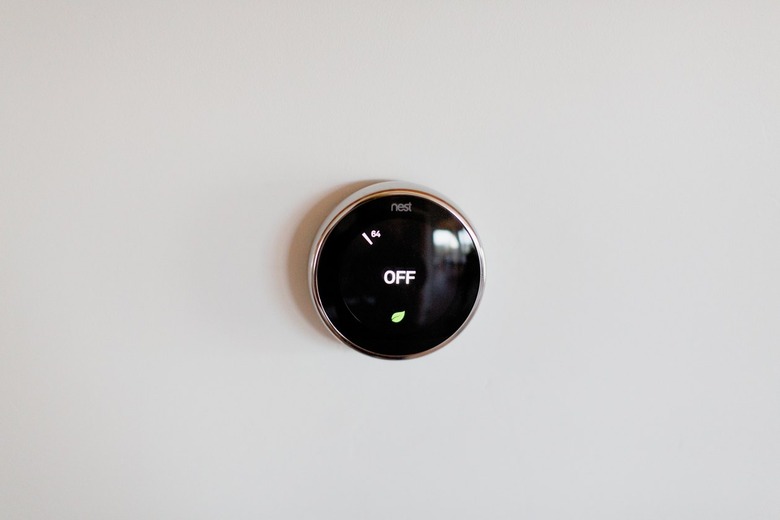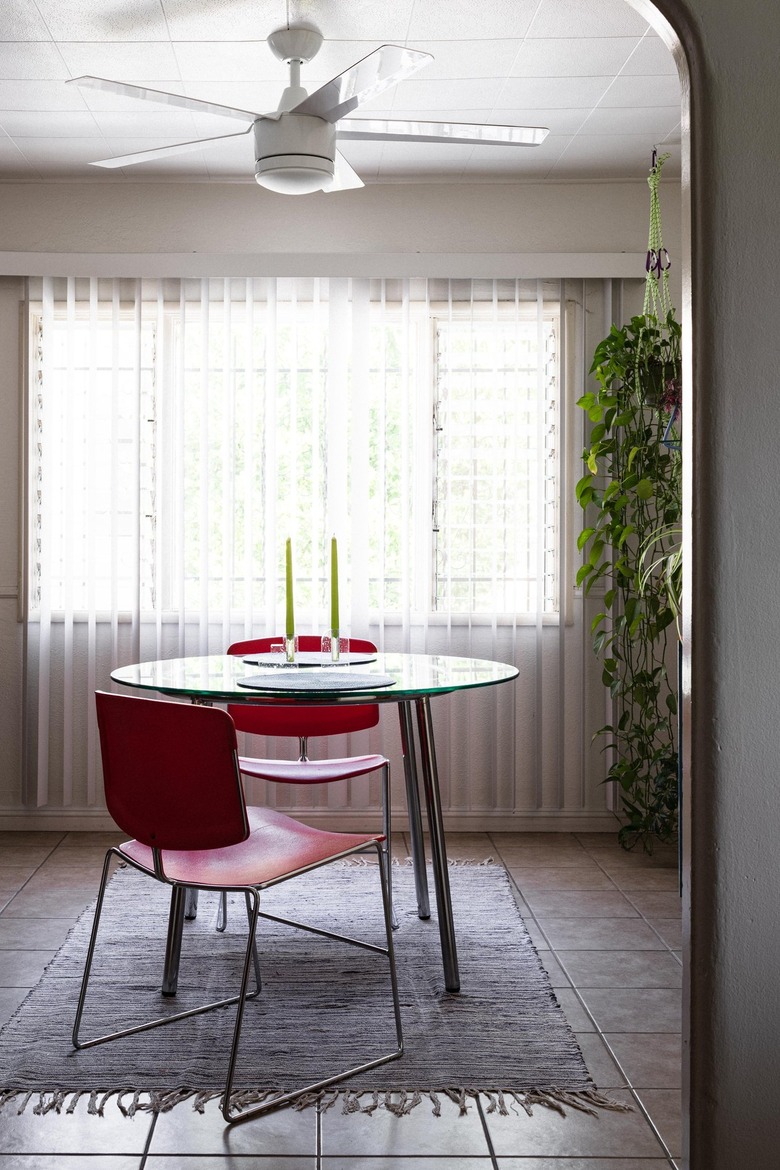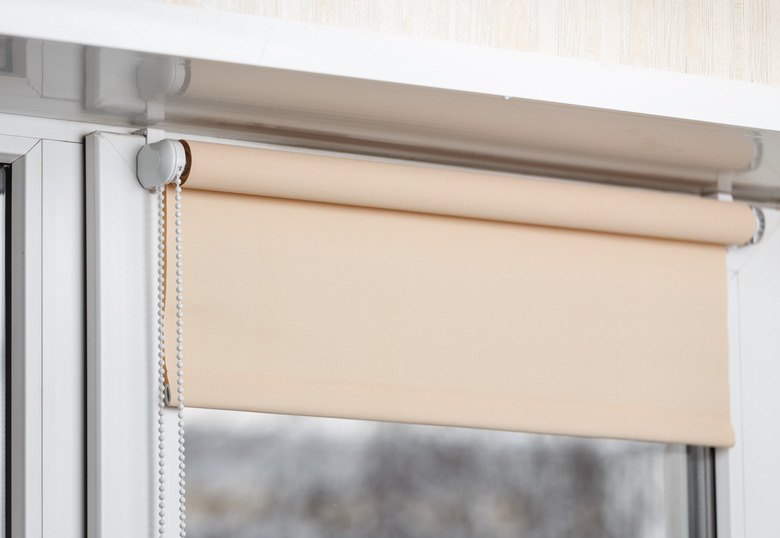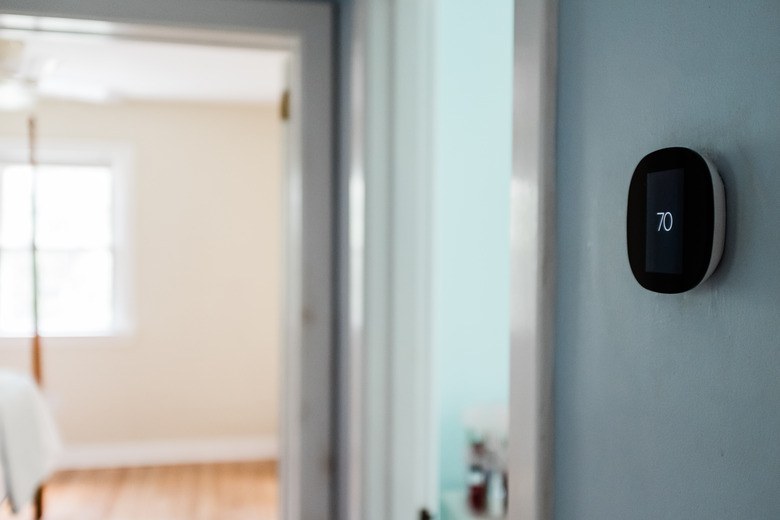How To Use Your A/C More Efficiently —11 Tips For Staying Cool
We may receive a commission on purchases made from links.
Depending on where you live, a good home air conditioner can be a nice luxury on a warm day or an absolutely critical device that makes blazing summer heat waves bearable. When your air conditioning system isn't working effectively, it can make your energy bills skyrocket and can strain the system. This could potentially cause it to break down, leaving you in the uncomfortable (and often unsafe) heat. This is why it can pay to spend a little time and money trying to keep your air conditioner working as efficiently as possible — whether you have a small window unit or a whole-home central air conditioning system.
1. Increase Your Home’s Insulation
1. Increase Your Home's Insulation
Fact: the cooler your home is without the air conditioner running, the less your A/C unit will have to work. To get this accomplished, start by air-sealing your doors and windows and looking for any other places where cool air may escape from your home, such as ducts running through a hot crawl space or attic. Use weatherstripping, expanding foam and caulk to seal up gaps and cracks as necessary.
Once you've addressed air leaks, you may also consider increasing insulation in the attic, which helps to keep attic heat out of the rest of the house in the summer (in the winter, attic insulation keeps warm air inside the living spaces). You may also want to add insulation around your ductwork in any unconditioned spaces, as this can keep cold air in the ducts.
2. Let in Cool Air
2. Let in Cool Air
It's worth noting that stepping up insulation doesn't mean you should leave your doors and windows closed all the time. In fact, if you live in a reasonably dry climate with cool air at night, it's a good idea to open your doors and windows to air out the home at night or early in the morning, increasing airflow and letting in outside air while it's nice and cool. Just be sure to close all of your doors and windows before warm air starts to enter your home again. Remember that the goal is to bring in cool air from outside when it's cool outside and to seal in the cold air from your air conditioner when it's hot outside.
3. Invest in a Dehumidifier
3. Invest in a Dehumidifier
If you live in an area that's notably humid, invest in a good dehumidifier since humidity makes you feel dramatically hotter no matter what the thermometer actually reads. In fact, while a room that is 80 degrees Fahrenheit with 10 percent relative humidity may feel like 78.1 degrees inside, a room that is 80 degrees with 90 percent relative humidity will feel like it is 85.6 degrees.
A good portable dehumidifier can bring down the relative humidity in an individual room, leaving you feeling way cooler, but remember to dump out the basin regularly to keep the device working efficiently. Alternatively, a whole-home dehumidifier can be incorporated into your home's HVAC system, but most newer air conditioners already remove humidity from the home on their own, so if your system leaves your home humid, it might be more cost effective to upgrade to a new A/C unit that uses less energy than your current model while also dehumidifying your home.
4. Take Advantage of Fans
4. Take Advantage of Fans
Don't forget about fans, which may not cool the air but do circulate it, which means pulling cold air in from outside or directing cool air indoors. Use box fans to bring in more outside air when your doors and windows are open. When running ceiling fans to feel cooler, make sure they're running counterclockwise to push air down on you, or they may suck up air and push it out to the walls. Just running a ceiling fan can allow you to set your air conditioner 4 degrees higher without affecting your comfort level.
It's worth adding that you shouldn't run fans while you're not in the room because this will just waste energy and won't change the temperature of your home. In fact, the motor could even increase the temperature of your home.
5. Block Out the Sun
5. Block Out the Sun
To further cool things down, apply window treatments to keep sunlight from heating up your home. Install solar window film over your windows to reduce ultraviolet light from entering through the windows and to increase the insulation on the window itself. Then, put up black-out thermal curtains to further insulate your room and keep out any more sunlight that could heat your space.
Wherever possible, cool down your home even more by planting trees or large shrubs near your home for increased shade. Remember that asphalt, concrete and rock can absorb and radiate heat, increasing the temperature inside the home, so if you can cool these down with shade or even remove them, you may want to do so.
6. Know When to Hire Professionals
6. Know When to Hire Professionals
Just like a car, your air conditioning will only operate at peak efficiency with proper care. For homeowners with a central cooling system, this starts with having a technician service your air conditioning system once a year, preferably in spring before you start using the unit frequently.
Typical maintenance service by an HVAC professional involves changing the air filter, calibrating the thermostat, checking the electrical components, lubricating moving parts, cleaning and checking the evaporator coil, inspecting and cleaning the condenser coil and more. All of this should keep your air conditioning unit working more effectively and can reduce the risk of malfunctions that could result in costly repairs.
On that note, if you notice a possible problem with your A/C system, be sure to contact a professional as soon as possible so the issue can be repaired before it gets worse. This applies to window air conditioners, portable air conditioners, minisplit systems and whole-home units. Signs of problems include increased energy costs without increased use, a compressor that gets iced up, a system that cycles on and off too often and new, strange sounds.
You may also wish to have a professional check your ductwork. If you have a whole-home system and notice that part of your home stays significantly warmer than the rest of the house, this could be an issue. Occasionally, air duct connections may get loosened, leaving the cold air to travel into your attic or crawl space before it reaches the vents in your rooms.
7. Perform Proper Air Conditioner Maintenance
7. Perform Proper Air Conditioner Maintenance
Aside from professional tune-ups, you can also do some basic maintenance yourself to ensure your A/C is working its best. A dirty filter is one of the most common reasons for poor air conditioner performance, reducing efficiency and increasing the strain on the unit. How frequently your filter needs to be changed depends on several factors (such as household conditions, the type of filter and the time of year), but for best results, check it once a month. If the filter looks dirty, replace it as soon as possible.
Also be sure to maintain proper airflow around your condenser coil since reduced airflow instantly reduces a unit's efficiency. This means keeping vegetation, trash and any other objects away from the outdoor unit of your central air conditioner or the exterior part of a window A/C. Ideally, you should have a 4-foot radius around the condenser. You may also want to clean your condenser coil because dust and dirt buildup can reduce the airflow. It can also help to add some shade over your condenser because this will keep it cool so it doesn't have to work as hard. That being said, make sure you don't block the airflow to the unit.
If you have central air, start vacuuming your air vents once a month, keeping dust, pet fur and other debris out of the vents, as these can reduce the amount of cool air flowing from the vents. Also be aware of furniture or other objects that are placed in front of the vents, as this may reduce their efficiency.
8. Adjust Your Thermostat Settings
8. Adjust Your Thermostat Settings
Try to set your thermostat one or two degrees warmer than your ideal comfortable temperature, which will leave you reasonably cool but save you quite a bit of money. In fact, while air conditioners are designed to ideally be set at 78 degrees, you can save up to 10 percent on your cooling costs for every degree higher you set the thermostat. If you can't bear to turn the temperature up a single degree throughout the hottest time of the day, consider programming your thermostat to go up one or two degrees while you sleep.
9. Buy a Smart Thermostat
9. Buy a Smart Thermostat
If you don't already have a smart thermostat, it's worth the investment to install one, particularly considering the potential energy savings and the fact that many utility companies offer rebates for smart thermostats since they are so much more energy efficient. A programmable thermostat allows you to set up different comfort settings depending on your needs, such as when you'll be home, asleep, at work, on vacation, etc. A smart thermostat allows you to control your cooling system from your smartphone, allowing you to increase your home's temperature while you're away and gradually reduce the temperature before you get home. Some devices can even automatically change settings based on whether your phone is in the home or not since this presumably means you are home or not.
If you need to install a new thermostat, be sure to talk to your HVAC professional about its location since a thermostat too close to a window, kitchen or other area where it gets hotter than the rest of the home may kick on too often.
10. Use Proper Settings When You’re Away
10. Use Proper Settings When You're Away
It can be a bit of a challenge to find the right thermostat settings to use while you're away from home. Turning off your air conditioner all day saves money while you're away but places a terrible strain on the system to cool things down again when you get home. On the other hand, it's not great for your air conditioner to be left running all day. Try to strike a balance based on how long you'll be gone and how hot it is outside.
Ideally, you want your air conditioner to go on occasionally while you're away so that your house doesn't get so hot that the unit will have to work extra hard to cool the air again when you get home. If you'll be gone less than an hour, it's best to leave the unit at the same temperature. If you'll be gone until nighttime, you might want to set it much higher since your house will probably naturally cool down a bit before you get home.
While you're at work, you'll ideally want to set it somewhere between the outdoor temperature and the temperature you want when you get home so the system isn't struggling to cool down your house quickly. Alternatively if you have one, you may program your smart thermostat to a particularly high setting in the morning and then set it to slowly reduce the temperature one or two degrees at a time in the few hours before you get home.
11. Consider Upgrading Your Air Conditioner
11. Consider Upgrading Your Air Conditioner
If nothing else seems to help or if you need repairs regularly, it may be time to invest in a new air conditioner. While this can be a major expense, especially when it comes to central air conditioning units, a more energy-efficient model could dramatically reduce your energy use. In fact, new high-efficiency models can reduce your cooling costs by as much as 30 percent.
When buying a new air conditioner, look for a unit that is the right size. Window units clearly state the proper BTUs for different-sized rooms, but the same concept applies to whole-house systems: An A/C that's too big wastes energy, but something too small works too hard to cover an excessively large area. Also, be sure to look for products that have an ENERGY STAR rating to ensure they have high energy-efficiency ratings.
References
- Apliance Analysts: 21 Quick Tips for How To Get The Most Out Of Your Air Conditioner
- NBC News: How to Keep Your House Cool Without Running up Your Utility Bill
- Service Champions: What's Included in Professional A/C Maintenance?
- AAA Heating and Cooling: How To Keep Your Central Air Conditioner Running Efficiently
- Greener Ideal: 4 Tips to Run Your Air Conditioner Efficiently
- Energy Vanguard: 9 Uncommon Tips for Keeping Cool with a Struggling Air Conditioner
- Angi: 12 Air Conditioning Tips for the Summer
- David Gray: How Do Air Conditioners Remove Humidity
- National Weather Service: Heat Index Calculator
- Energy.gov: Fans for Cooling



